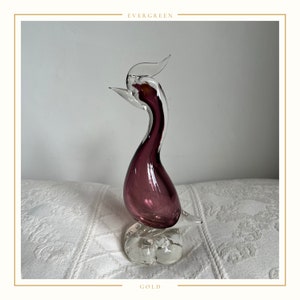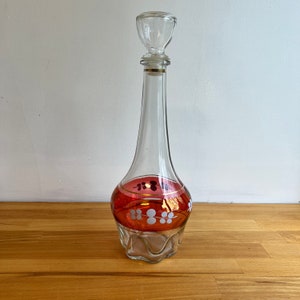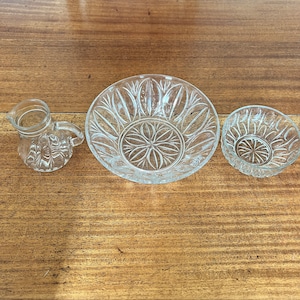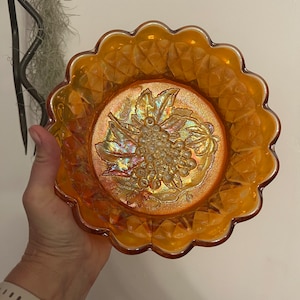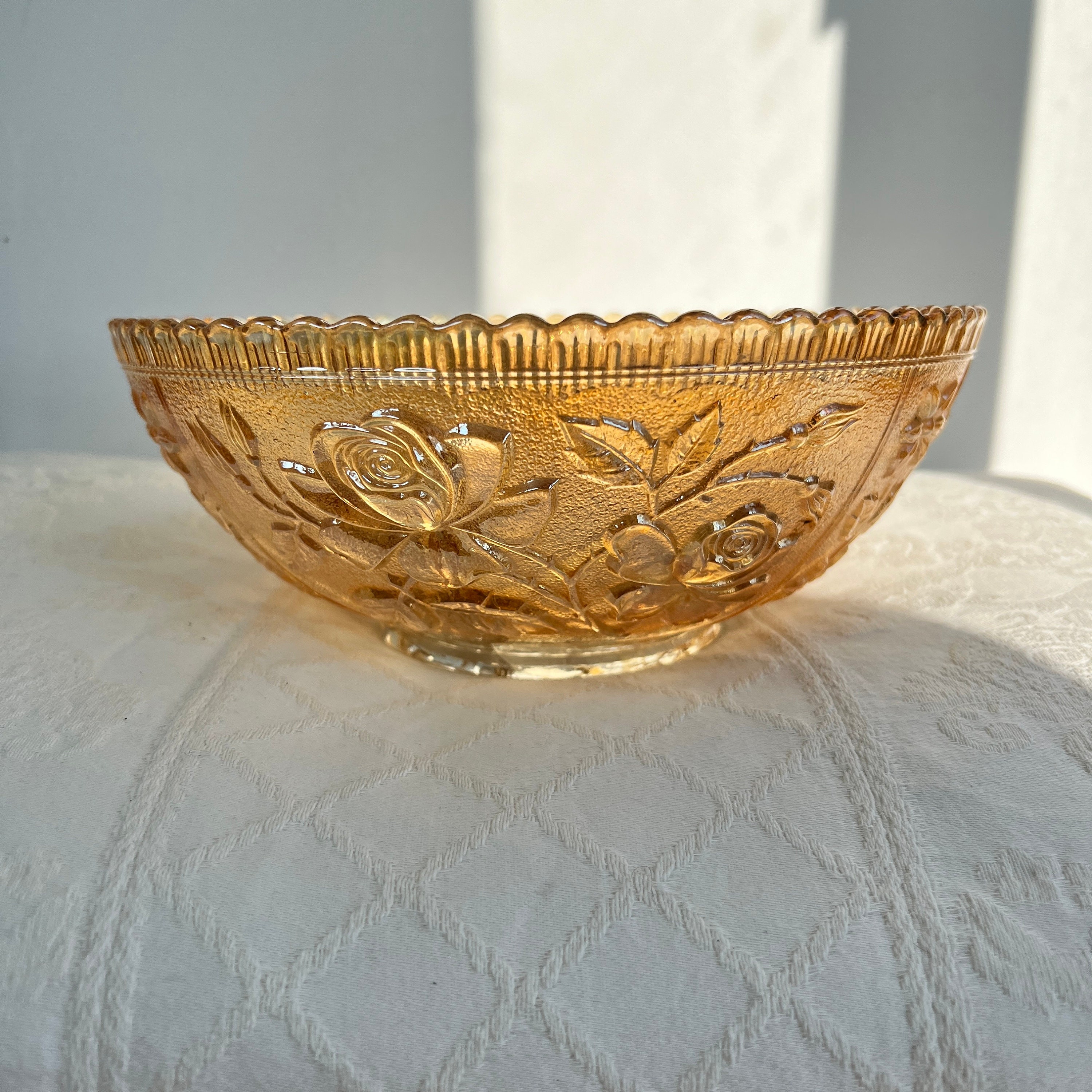
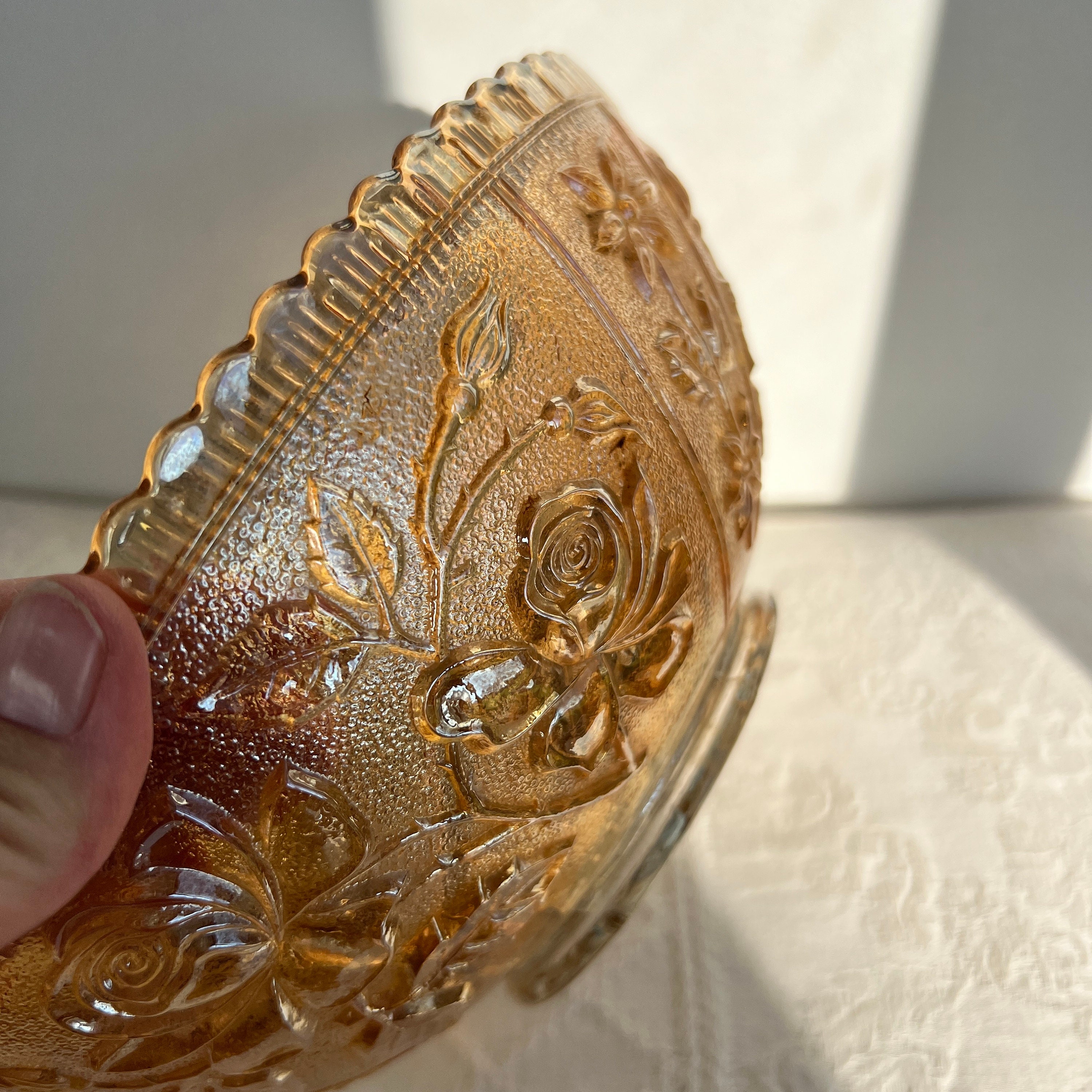
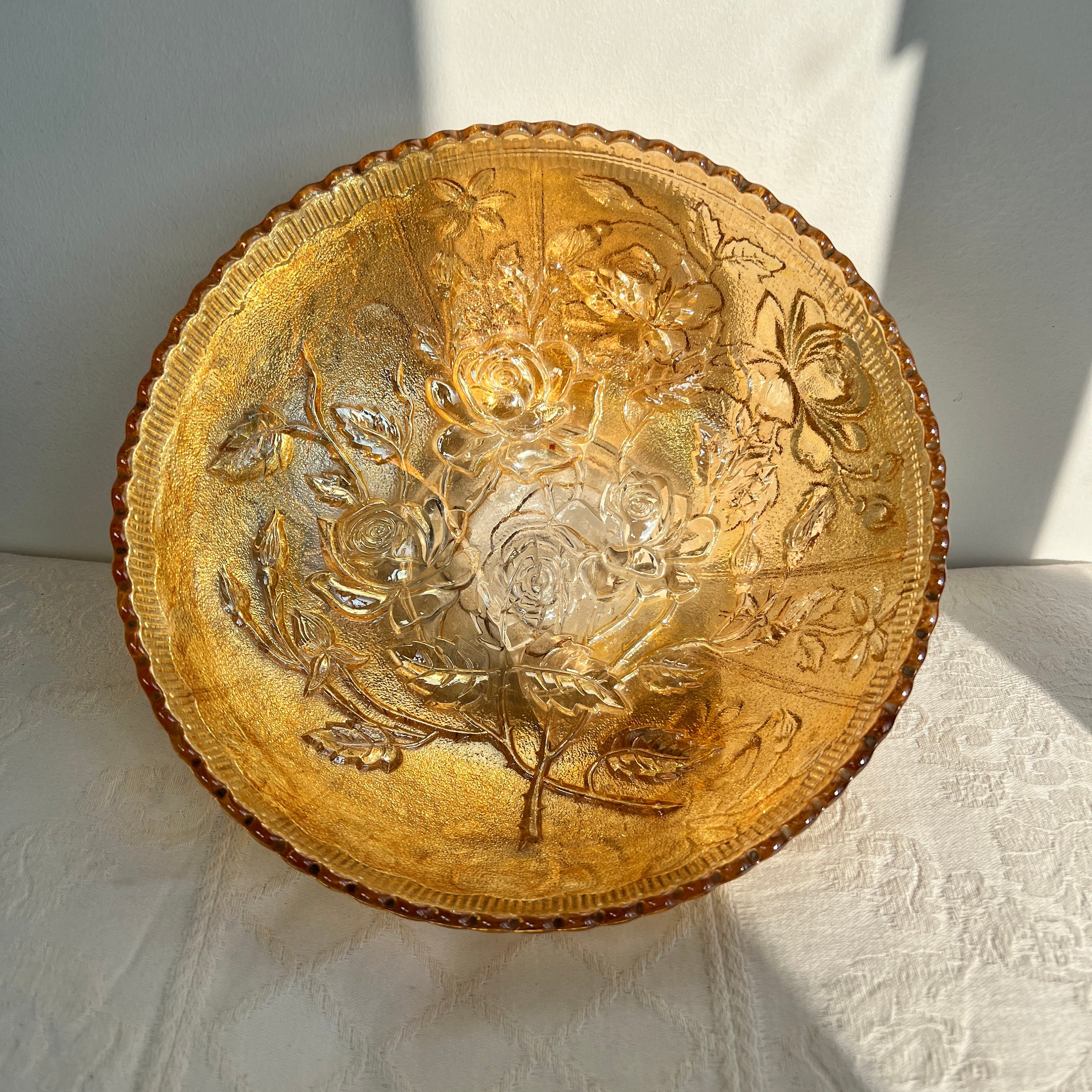
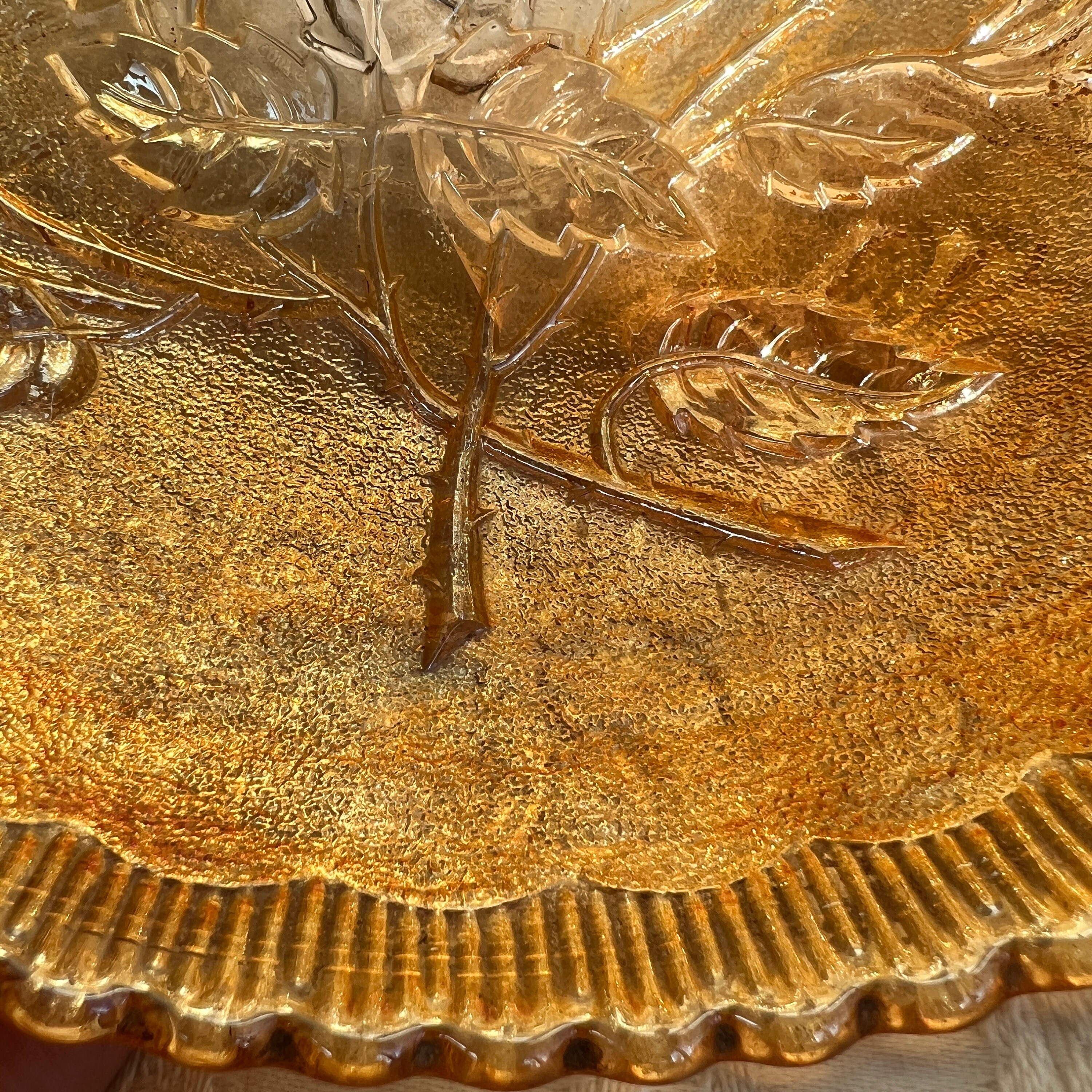
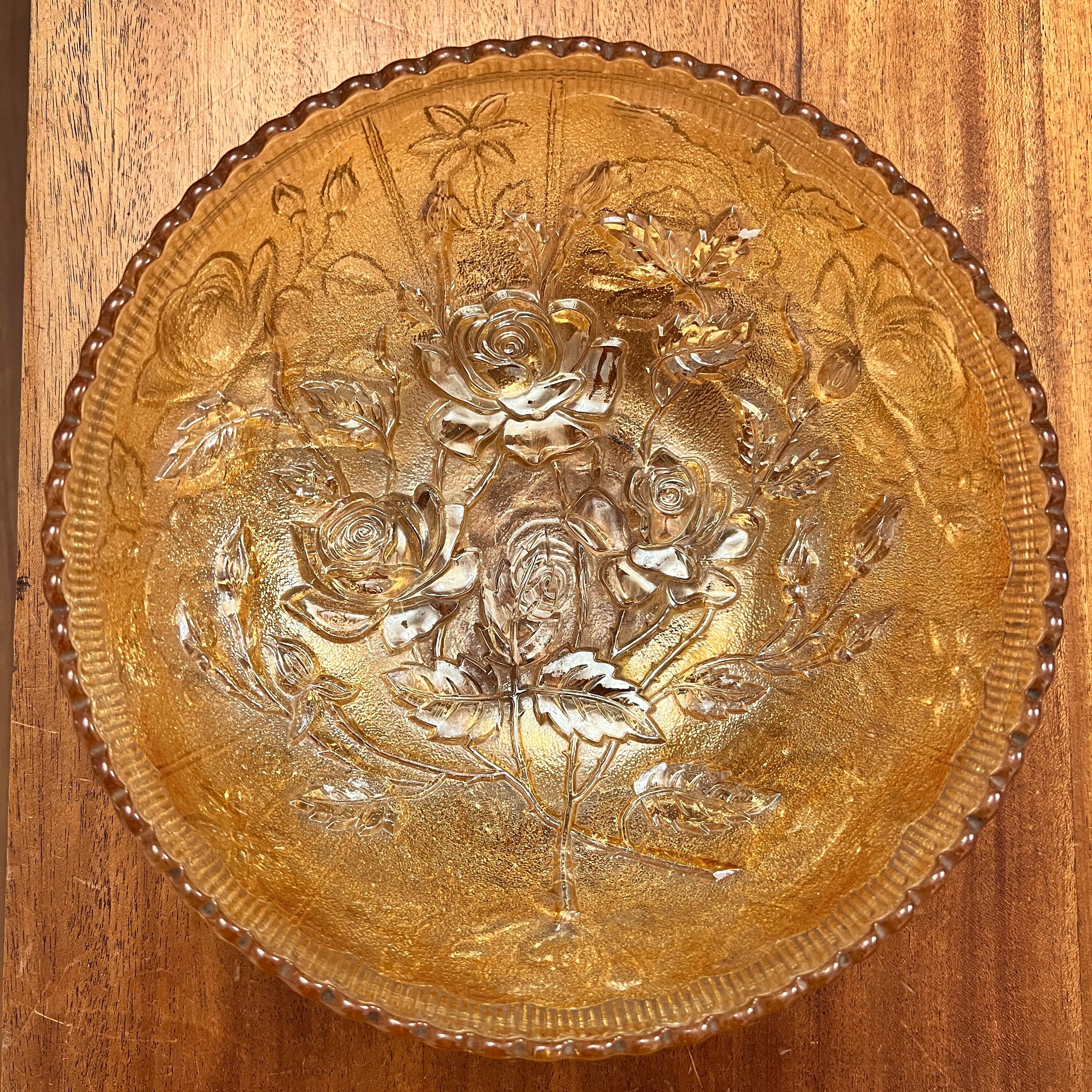
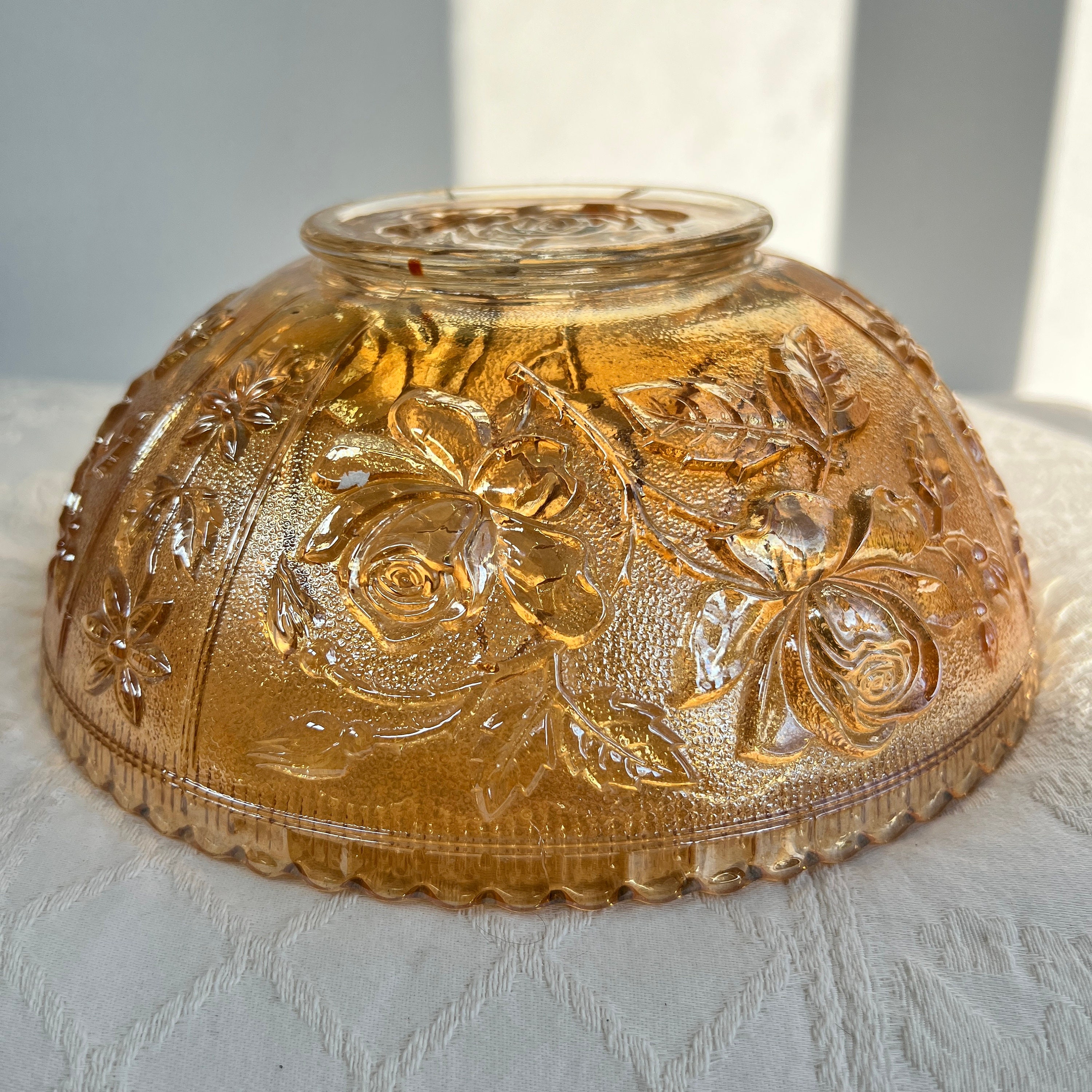
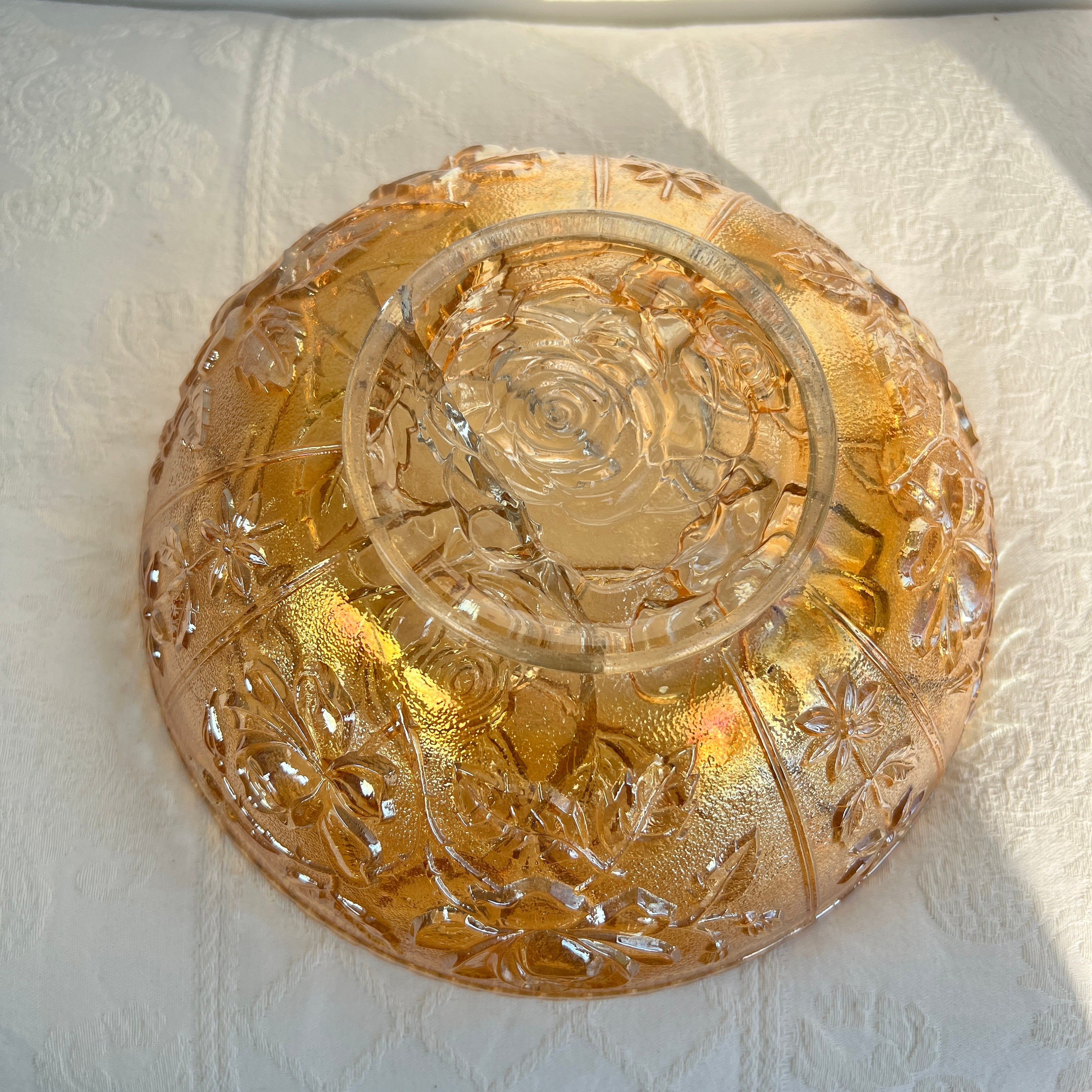
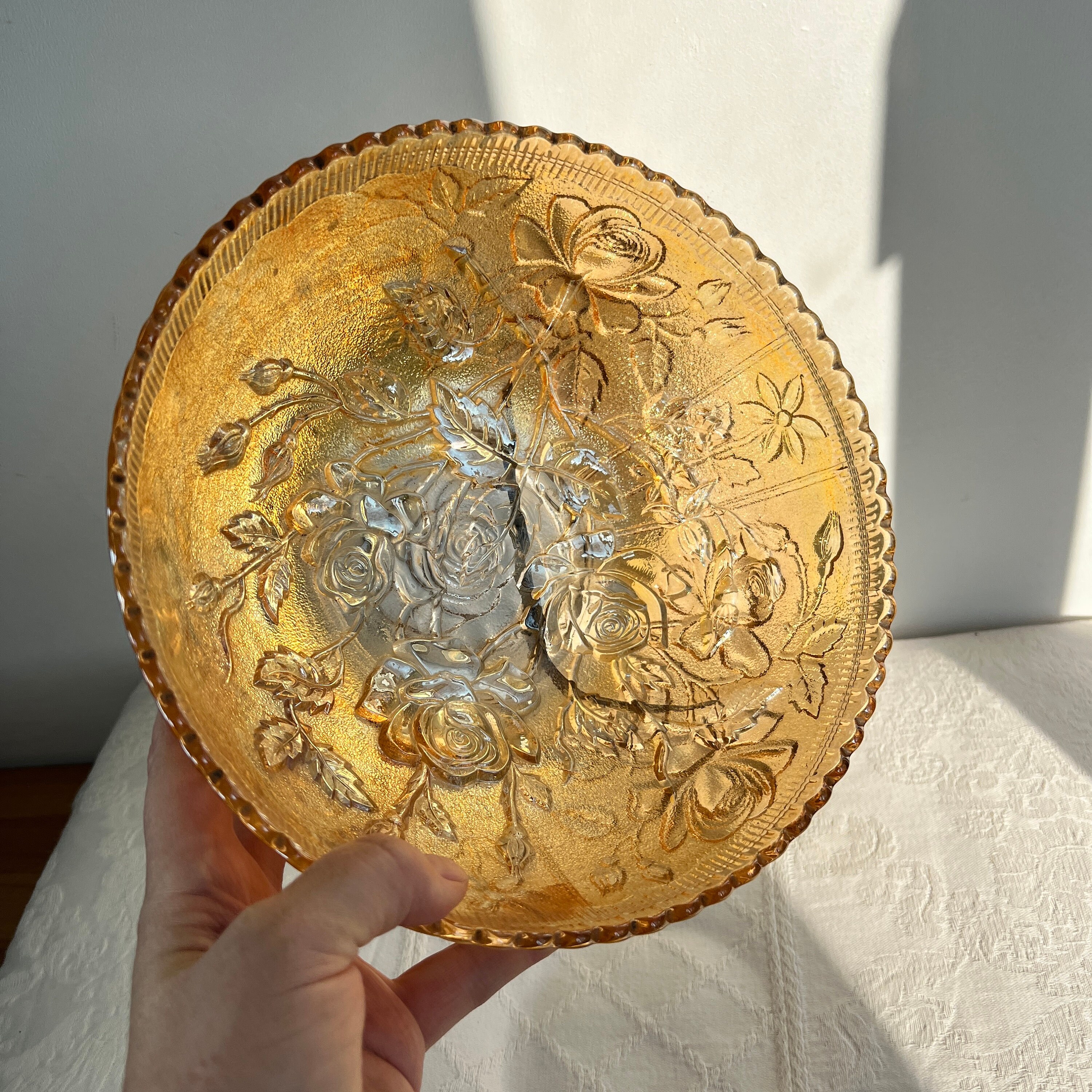
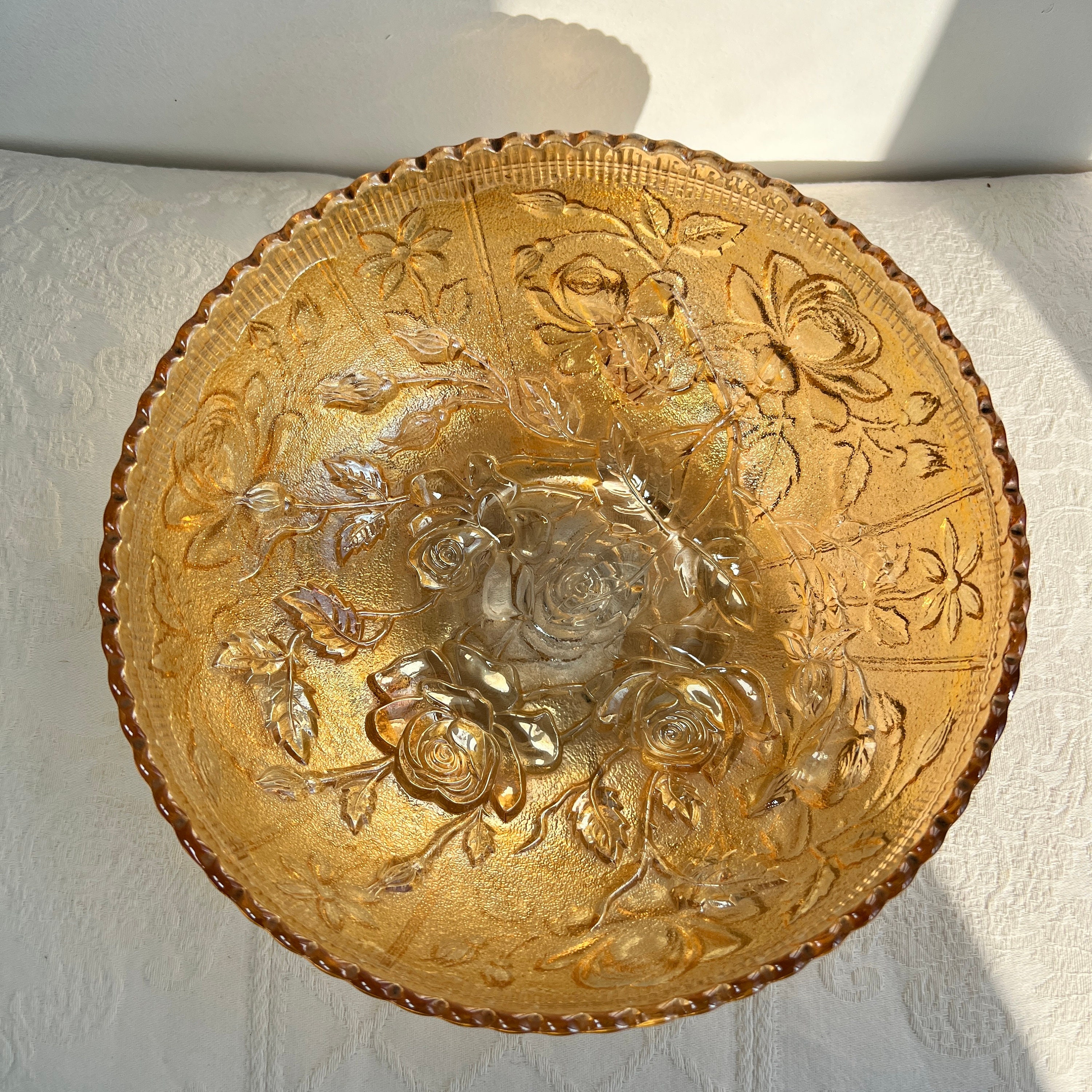
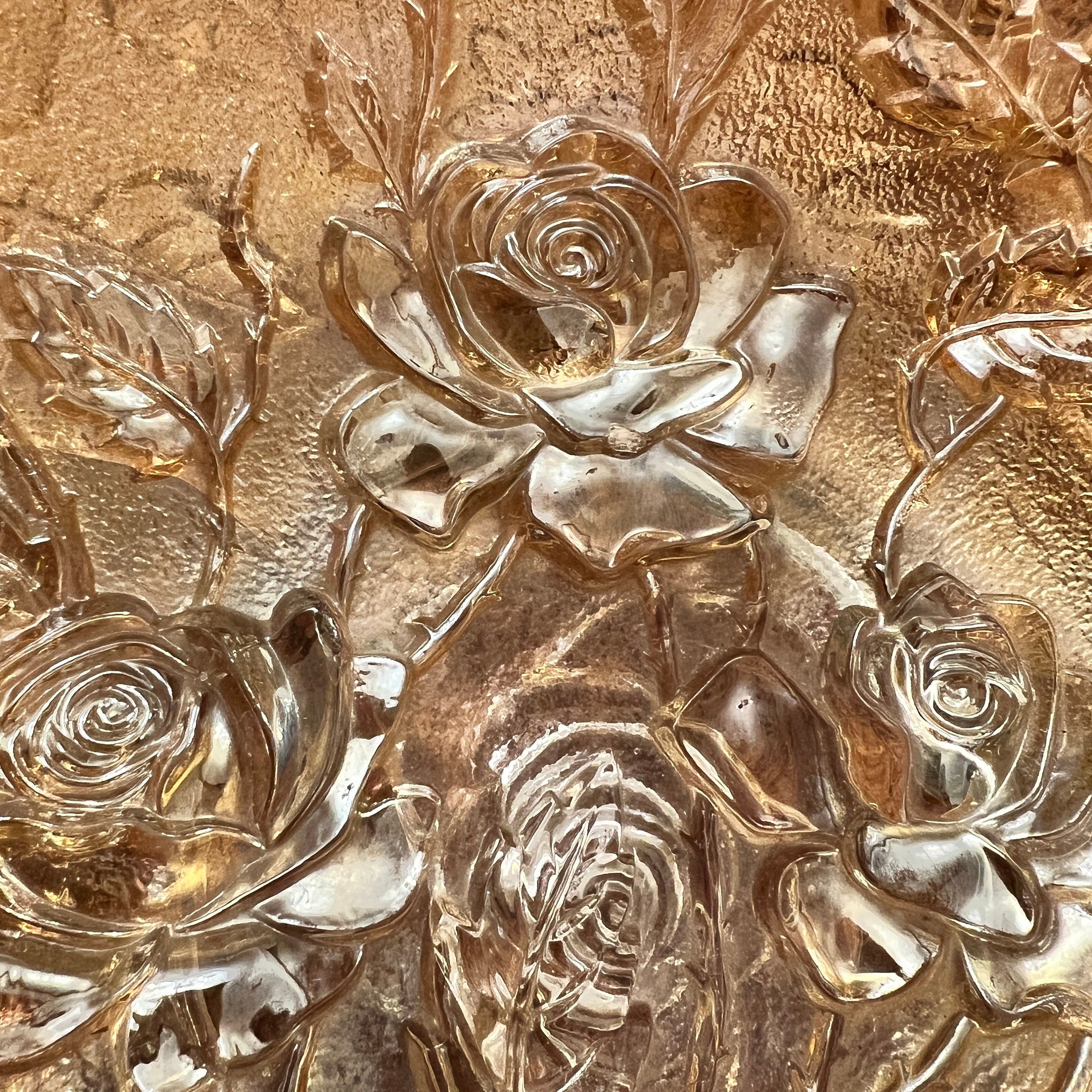
Glassware
Wonderfully decorative vintage rose covered golden Carnival Glass bowl - with some damage
$16.75
-
DetailsEvergreen Gold only stocks quality items, many of these are vintage and so will display some signs of age or use related deterioration or wear. Items are described as accurately and as transparently as possible, so please fully read the description and view the photographs prior to purchase to make sure that the item meets your needs. Thank you.
A slightly damaged, beautiful and elegant example of early to mid 20th Century Carnival Glass in a lovely sparkling golden lustre. These lovely pieces of glass were very popular in the early 20th Century and were seen as affordable versions of the more expensive Tiffany Glass. Carnival glass gets its beautiful lustre by applying metal salts to the still hot freshly moulded glass and this creates the typical rainbow lustre effect.
This particular example is a thick and highly decorative medium/large bowl with detailed mouldings of roses on the inside and outside of the bowl. The rim is scalloped and ribbed to create a nice top edge. The mouldings themselves are of plain untextured glass, the areas between the flower detailing has been textured with fine stippling. The outside of the bowl is divided into 3 rose decorated sections by double lines, separated by 3 narrower daisy decorated segments. The inside is decorated with a single large design featuring roses and beneath the foot there is a single rose.
This is a beautiful bowl but has unfortunately sustained a large internal fracture in the base and a small chip to the inner of the base. The fracture can only be easily seen when the bowl is turned upside down. The photograph was taken in a light that really highlights it so it can be clearly seen before purchase. It centres around the base of the bowl and does not travel far up the sides. On the inside bottom of the bowl there is also a small 3x3mm abrasion/chip on one of the rose petal edge mouldings where something has been dropped in the bowl, again this is really only visible on close inspection and if you know it is there. The final photograph shows this chip on the lower petal of the central top rose.
This is such a pretty bowl and is still a functional and very decorative item despite the fracture in the base. It would make a lovely fresh fruit/nut bowl or catchall bowl, as well as looking lovely just empty for decoration. It really sparkles when the light hits it.
The bowl measures approximately 9cm tall and 23.5cm diameter across the top.
Please look carefully at all of the photographs and the video as these form part of the description and help to show scale, colour and condition.
